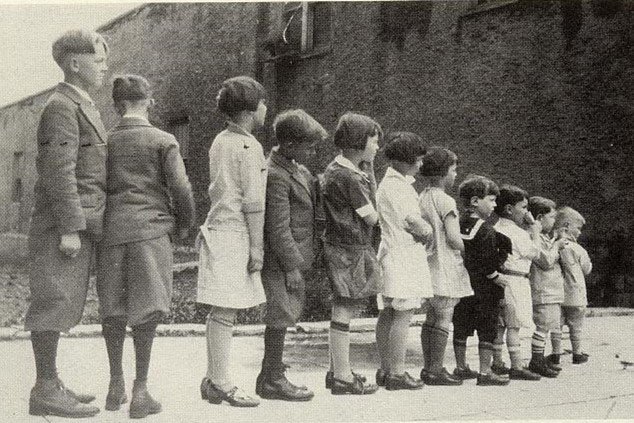‘Path Dependency’ in Early Childhood Policy: What It Is and Why It Matters
By Katharine B. Stevens
BLOG
July 6, 2015
I eat my peas with honey. I’ve done it all my life.
It makes ‘em taste quite funny, but it keeps them on the knife.
A few weeks ago I began digging into the history of federal early childhood policy, which can be traced back 150 years to the 19th century orphanage movement and turns out to be both fascinating and invaluable in understanding the landscape we find ourselves in today. As I’ll explain in more detail in a report coming out later this month, what’s most striking in light of the history is the extent to which our current debates are confined to very well-worn ruts in the early childhood policy road. We’re spending a lot of time trying to do more of what we already know how to do, rather than defining our real goals and pursuing the most promising avenues to address those.
One way of understanding how we’ve ended up here is through the idea of “path dependency,” a concept used in economics and other social sciences to explain how decisions faced at any particular point are highly limited by the decisions made in the past. (Writing about the path-dependent development of the American sewer system, for example, one author describes it as “a jury-rigged series of fixes applied to salvage an infrastructure designed in accordance with flawed science” — which gives you the basic idea.)
So this is how it works. We develop Policy A as the best solution we can think of at the time to a particular problem. Then when Policy A doesn’t work as well as we thought it would, we put Policy B in place to address the problems left over — or caused — by Policy A. Down the line, the outcomes of Policy B usually end up being disappointing, so we launch into Policy C, aiming to fix what went wrong with Policy B, which itself was designed to fix the negative effects of Policy A. Before long, we’ve entirely lost sight of the problem we were trying to address way back with Policy A in the first place. And all the while, we’ve built up structures and bureaucracies around these policies that reinforce and entrench particular views and practices, and shape our thinking about what makes sense to do next.
The dominant focus on pre-K in early childhood policy is a great example of this. Since 1965 when Lyndon Johnson passed the Elementary and Secondary School Act, including Title I, we’ve foregrounded our public school system as the best way to address poverty and help disadvantaged children. Over the subsequent five decades, we’ve responded to persistent evidence that the public schools aren’t actually serving those kids very well by investing ever-greater resources to “fix” the schools so they’ll do a better job for the children we’ve always hoped they’d help. Still more recently, we’ve begun to shift our focus to younger children, recognizing how crucial the preschool years are to children’s development. “If we just start earlier,” we’re now hoping, “maybe that will enable kids to be more successful in school.”
At the same time, what we know is that brain development starts at birth. We know that infants’ and toddlers’ early experiences lay critically important groundwork for the rest of their lives, and that young children’s healthy development depends on the quality of their earliest environments. We also know that very young children are largely in their homes and in child care, which are therefore the environments it would make sense to focus on.
But we’re used to thinking about school. So when we’re now thinking about what to do to improve the life chances of young children, what we come up with is more school. In other words, early childhood policy viewed through our decades-old “school reform” lens results in the current emphasis on pre-K, as yet another in a long line of initiatives to fix schools. In fact, the pre-K push ends up being at least as much about improving schools as it is about improving the life chances of poor children.
There’s nothing wrong with changing policy to accommodate new information or to improve on past policies. The problem comes when we forget our core goals and instead allow debates to be driven by long-established institutions and ways of thinking about things that have become disconnected from the first principles of what we’re trying to achieve. The roots of our current federal early childhood policies lie in the 19th century, when America first committed itself to improving the wellbeing of disadvantaged young children, and since then we’ve gone from one thing to the next — orphanages, family support, child care, Head Start, pre-K — by a circuitous, unintentional road. Understanding exactly how we got to where we are now will help us a great deal in figuring out where to go next.
See Also
Report ~ November 2, 2015
Op-Ed ~ November 3, 2015
Blog ~ August 13, 2015




